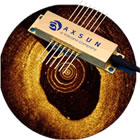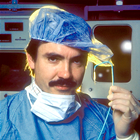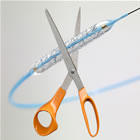 Optical Coherence Tomography (OCT) is an exciting new imaging technique that is being used to assess the interior anatomy of coronary arteries during and after angioplasty and stent placement. (Read our exclusive interview with Dr. Giulio Guagliumi for more information about how OCT can aid in measuring the healing of stents.)
Optical Coherence Tomography (OCT) is an exciting new imaging technique that is being used to assess the interior anatomy of coronary arteries during and after angioplasty and stent placement. (Read our exclusive interview with Dr. Giulio Guagliumi for more information about how OCT can aid in measuring the healing of stents.)
This technology is just now beginning to bridge the divide between research tool and clinical aide — for example, OCT can show high resolution pictures of stent struts and show whether they are covered or not. So the future for OCT imaging is definitely of major interest. Continue reading

 34 years ago, Andreas Gruentzig performed the first coronary angioplasty. Rather than cutting open the chest, sawing through the sternum and sewing a bypass conduit (harvested from the leg or internal mammary artery) into the coronary artery, he elegantly threaded a balloon catheter to the blockage through a small incision in the femoral (groin) artery, in an awake patient. He then inflated the balloon, compressing the plaque against the arterial wall and opening the artery. The procedure was a total success and his first patient, Adolph Bachmann, is alive and well today! (
34 years ago, Andreas Gruentzig performed the first coronary angioplasty. Rather than cutting open the chest, sawing through the sternum and sewing a bypass conduit (harvested from the leg or internal mammary artery) into the coronary artery, he elegantly threaded a balloon catheter to the blockage through a small incision in the femoral (groin) artery, in an awake patient. He then inflated the balloon, compressing the plaque against the arterial wall and opening the artery. The procedure was a total success and his first patient, Adolph Bachmann, is alive and well today! ( One of the things about working at Angioplasty.Org that warms my heart (pun intended) is connecting with patients around the world. Our
One of the things about working at Angioplasty.Org that warms my heart (pun intended) is connecting with patients around the world. Our  Just a reminder to you interventional cardiologists, cath lab nurses and technologists who are interested in learning how to do angiograms, angioplasty and stents from the wrist — next Saturday, January 15, is SCAI’s second transradial program, being held in Philadelphia with an “all-star” faculty of transradial experts (see “
Just a reminder to you interventional cardiologists, cath lab nurses and technologists who are interested in learning how to do angiograms, angioplasty and stents from the wrist — next Saturday, January 15, is SCAI’s second transradial program, being held in Philadelphia with an “all-star” faculty of transradial experts (see “ A lost story this past couple of weeks has been an “admission” by the American Heart Association that the number of angioplasties performed in the United States is actually half of what the AHA has been saying all these years.
A lost story this past couple of weeks has been an “admission” by the American Heart Association that the number of angioplasties performed in the United States is actually half of what the AHA has been saying all these years.

